
Who Made Bikes? Discover the Inventors Behind the Bicycle
Bicycles are one of history’s most transformative inventions, but who made bikes? From Comte de Sivrac’s first two-wheeler to Karl Drais’ Draisine and John Kemp Starley’s safety bike, each inventor shaped the bicycle into the modern machine we ride today—including electric bikes that make cycling easier and more accessible.
Who Made Bikes? The Answer Explained
If you’ve ever wondered who made bikes, the answer is that bicycles were developed over centuries by several inventors. It all started around 1790 with Comte de Sivrac, who created the Celerifere, an early wooden two-wheeled scooter.
In 1817, Karl Drais introduced the Draisine, the first steerable, foot-propelled bicycle, followed by Kirkpatrick MacMillan, who added the first effective pedal system. In the 1860s, Pierre and Ernest Michaux built the pedal-driven velocipede, nicknamed the “boneshaker” for its rough ride.
The modern bicycle took shape in 1885 with John Kemp Starley’s safety bicycle, featuring equal-sized wheels and a chain-driven rear wheel. Soon after, in 1887, John Boyd Dunlop invented pneumatic tyres, improving comfort, speed, and control. Together, these innovators answer the question: who made bikes, shaping it into the versatile vehicle we ride today.
The First Bicycles – From Celerifere to Draisine
Comte Mede de Sivrac and the Celerifere (1790)

Source: https://fr.wikipedia.org
The earliest known bicycle-like invention was the Celerifere, created around 1790 by Comte Mede de Sivrac. This simple, wooden, two-wheeled vehicle had no pedals, no chain, and no proper steering mechanism—it was propelled by the rider pushing their feet against the ground.
While primitive, the Celerifere marked the first attempt at a personal, human-powered vehicle and laid the foundation for the development of modern bicycles. Its innovative concept inspired future inventors to experiment with design improvements, making it a significant milestone in the history of bicycles.
Karl Drais and the Draisine (1817)

Source: https://en.wikipedia.org/wiki/Karl_Drais
In 1817, Karl Drais, a German inventor, introduced the Draisine, also called the “running machine” or hobby horse. Made from wood and metal, it featured a steerable front wheel and allowed riders to propel themselves by pushing their feet against the ground, similar to the Celerifere but with much-improved stability and control.
The Draisine was designed as an efficient alternative to horses, especially during a time when maintaining horses was expensive. Although some cities initially banned it and people were cautious of its use, the Draisine quickly gained popularity in Germany and France, inspiring further innovations that would ultimately lead to the pedal-powered and modern bicycles we know today.
Pedals and the Evolution of Cycling
Kirkpatrick MacMillan and Early Pedal Systems
The bicycle evolved significantly with Kirkpatrick MacMillan, a Scottish inventor who developed the first effective pedal system in the early 1800s. By allowing riders to propel the bike without touching the ground, his design made longer rides possible and turned bicycles into a practical mode of transport. MacMillan’s innovation laid the groundwork for the pedal bicycle and marked an important milestone in the history of bicycles.
This breakthrough inspired other inventors to refine bicycle mechanics and explore new designs, helping cycling gain popularity as both a practical and recreational activity.
Pierre and Ernest Michaux – The Velocipede (1860s)
In the 1860s, French inventors Pierre and Ernest Michaux enhanced pedal-powered bicycles by attaching pedals directly to the front wheel. Their design, called the velocipede, became the first widely recognized pedal bicycle, although it was nicknamed the “boneshaker” due to its iron-rimmed wooden wheels that made rides on uneven streets uncomfortable.
Despite its rough ride, the Michaux velocipede influenced the design of modern bicycles, paving the way for safer and more efficient bikes. It was a key step in transforming bicycles from experimental machines into practical vehicles for everyday use.
High Wheels, Safety Bikes, and Modern Bicycle Design
The Penny Farthing (1870s–1880s)
During the 1870s and 1880s, the Penny Farthing became one of the most recognizable early bicycles. Featuring a large front wheel and a small rear wheel, this design allowed for higher speeds but was notoriously unstable. Riders needed skill and balance to navigate its height, making it less practical for everyday use.
Despite its challenges, the Penny Farthing gained popularity across Europe and North America. It demonstrated the potential for faster bicycles and inspired inventors to create safer and more stable designs, marking an important step in the history of bicycles.
John Kemp Starley and the Safety Bicycle (1885)
In 1885, John Kemp Starley, an English inventor, introduced the safety bicycle, which featured two equal-sized wheels, a chain-driven rear wheel, and a lower, more stable seating position. This design made cycling safer, more comfortable, and accessible to a wider audience, laying the foundation for the modern bicycle we know today.
The safety bicycle solved many of the problems of earlier designs, including instability and limited control. Combined with the later invention of pneumatic tyres, Starley’s model helped establish cycling as both a practical mode of transport and a popular recreational activity.
The Pneumatic Tyre Revolution (1887)
The bicycle underwent a major transformation in 1887 when John Boyd Dunlop, a Scottish veterinarian, invented the first pneumatic tyres. His inflatable rubber tyres greatly improved comfort and performance, making bicycles more practical for everyday use and long-distance rides.
Key benefits of Dunlop’s pneumatic tyres included:
-
Smoother rides: Reduced vibrations and bumps on rough roads.
-
Increased speed: Lower rolling resistance allowed faster travel.
-
Better safety and control: Improved grip and stability for riders.
The invention of pneumatic tyres not only revolutionized cycling as a sport but also expanded the bicycle’s role as a practical mode of transport. This breakthrough laid the foundation for modern bicycles, making riding more enjoyable, efficient, and accessible to people of all ages.
Bikes in the Modern Era
Over the years, bicycles have evolved significantly in both design and materials. Early bikes were made of wood, followed by iron and steel, which improved strength and durability. Modern bicycles now use aluminum and carbon fiber, making them lighter, stronger, and more efficient than ever before.
Cycling has also diversified into specialized designs to meet different riding needs. Today, riders can choose from BMX bikes, mountain bikes, recumbent bikes, hybrid bikes, and even electric bikes, which provide pedal-assist power for easier and longer rides.
Advancements in components have further improved the cycling experience. Modern bicycles feature gears, advanced brakes, high-performance tyres, and lightweight frames, offering better speed, control, and comfort. These innovations have transformed bicycles into versatile machines suitable for commuting, sport, recreation, and leisure, while continuing the legacy of innovation in the history of bicycles.
The Future of the Bicycle
The future of bicycles is focused on innovation, versatility, and accessibility. Hybrid bikes, commuter bikes, and electric bikes are leading the way, combining comfort, efficiency, and technology. As cycling continues to grow in popularity, modern bikes are set to become faster, lighter, and more practical, ensuring that riding remains a sustainable and enjoyable option for everyone.
Ride into the Future with isinwheel Electric Bikes
As cycling continues to evolve, electric bikes are leading the way in combining comfort, speed, and efficiency. isinwheel e-bikes offer advanced features, long-range batteries, and high performance, making them perfect for commuting, recreation, or exploring new terrains. Experience the next generation of cycling with isinwheel and see how modern technology enhances every ride.
|
Images |
 |
 |
 |
 |
 |
 |
|
Models |
||||||
|
Top Speed |
20 MPH |
20 MPH |
18.6 MPH |
21.7 MPH |
19 MPH |
20 MPH |
|
Peak Power |
500W |
500W |
500W |
500W |
500W |
750W |
|
Battery |
36V 7.8Ah |
36V 13Ah |
36V 7.8Ah |
36V 10.4Ah |
36V 10.4Ah |
36V 10.4Ah |
|
Max Range |
28 miles |
65 miles |
35 miles |
60 miles |
55 miles |
55 miles |
|
Speed (before unlock) |
10/15/25 km/h |
6/10/15/20/25 km/h |
10/15/25 km/h |
6/10/15/20/25 km/h |
6/10/15/25 km/h |
6/10/15/20/25 km/h |
|
Speed (after unlock) |
15/25/32 km/h |
10/15/20/25/32 km/h |
15/25/30 km/h |
6/10/15/20/35 km/h |
15/25/30 km/h |
10/15/20/25/32 km/h |
|
Brake System |
front and rear disc brakes |
mechanical brake |
disc brakes |
mechanical disc brakes |
dual disc brakes |
dual disc brakes |
|
Max Load |
120 kg |
120 kg |
120 kg |
150 kg |
120 kg |
120 kg |
|
Net Weight |
23.2 kg |
27 kg |
23.3 kg |
27kg |
26.5 kg |
28.4 kg |
|
Suspension |
Rear mid shock absorber |
Front suspension |
Adjustable front fork + comfort saddle |
Hydraulic fork |
Dual |
Aluminum front fork |
|
Max Climb |
20% |
37% |
25% |
20% |
20% |
20% |
|
Tire Size |
14×1.95" |
26×1.95" |
16×1.75" |
26×1.95" |
16×2.15" |
26×1.95" |
|
Tire Type |
Pneumatic |
Pneumatic |
Pneumatic |
Pneumatic |
Pneumatic |
Pneumatic |
|
IP Rating |
IPX4 |
IP65 |
IPX65 |
IPX5 |
IPX4 |
IPX4 |
|
Removable Battery |
No |
Yes |
No |
Yes |
Yes |
Yes |
|
Rider Height |
150–185 cm |
160–192 cm |
155–185 cm |
160–190 cm |
140–180 cm |
150–192 cm |
Conclusion
Bicycles evolved through the work of many inventors, from Sivrac and Drais to MacMillan, the Michaux family, Starley, and Dunlop. So, who made bikes? It was a collaborative evolution over centuries. Today, modern innovations like electric bikes continue this legacy, and isinwheel e-bikes take it further—offering powerful motors, long-range batteries, and comfortable rides for commuting, adventure, and everyday cycling.
FAQs
Who invented the bike the first time?
The first known bicycle-like vehicle was the Celerifere, created around 1790 by Comte de Sivrac in France. However, the first practical, steerable, and foot-propelled bicycle was the Draisine, invented by Karl Drais in 1817.
Who was the first person to make a bike?
Karl Drais, a German inventor, is credited with creating the first usable bicycle in 1817. His design featured a wooden and metal frame, a steerable front wheel, and was propelled by pushing with the feet.
Did Leonardo da Vinci invent the bicycle?
No, there is no historical evidence that Leonardo da Vinci invented the bicycle. The earliest bicycles were developed much later, in the late 18th and early 19th centuries.
Did the British invent the bicycle?
While several bicycle innovations came from Britain, including Kirkpatrick MacMillan’s pedal system and John Kemp Starley’s safety bicycle, the very first bicycle was created in France by Sivrac and later refined in Germany by Drais. Britain contributed significantly to modern bicycle designs but did not invent the first bike.
The Latest Posts
Explore isinwheel products
City E Scooter | Off-Road Scooter
Fastest Scooter | Kids Scooters




















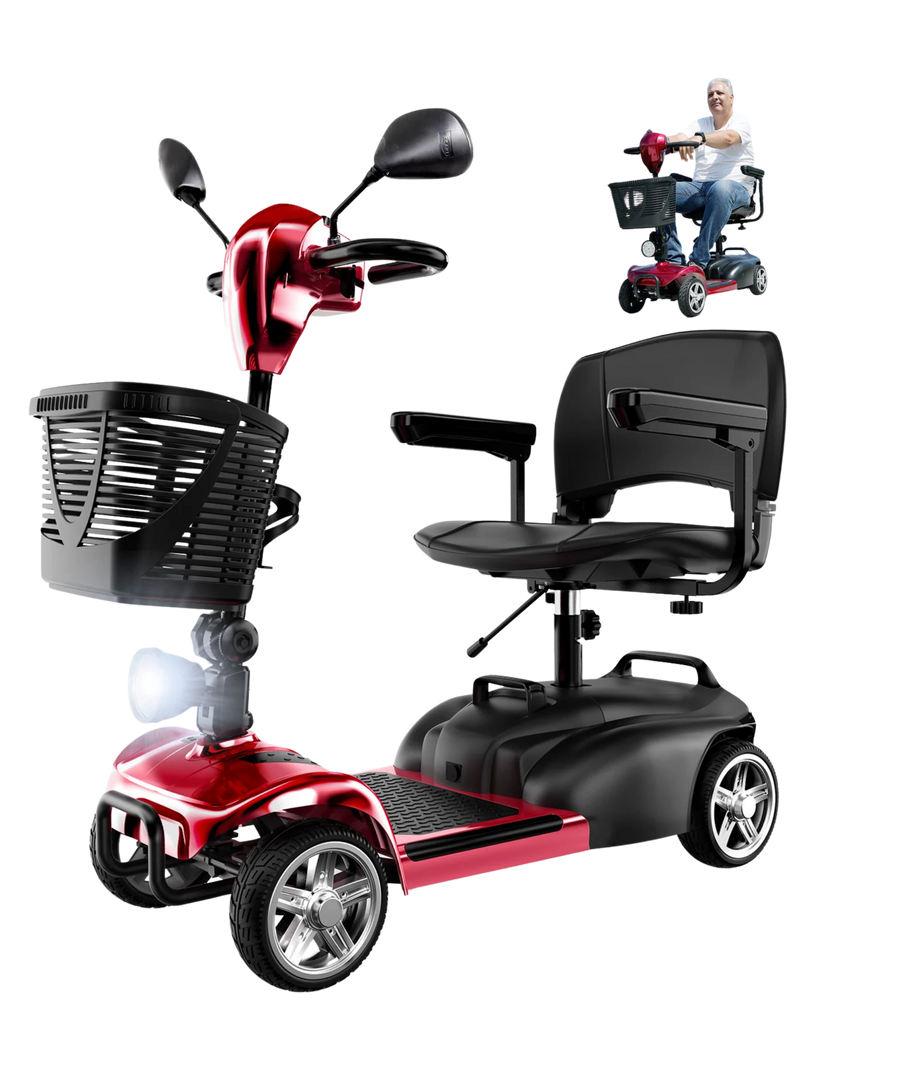































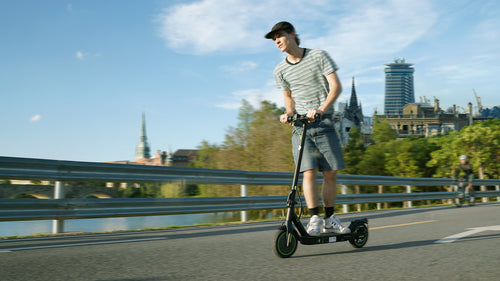


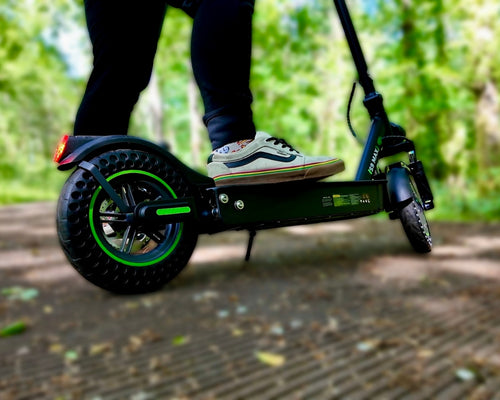
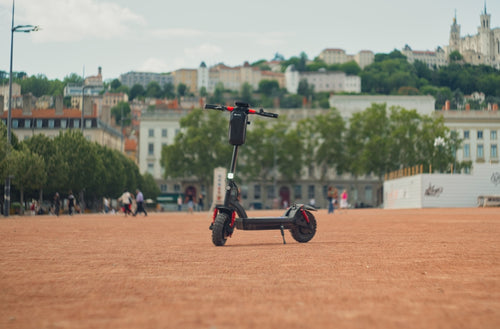
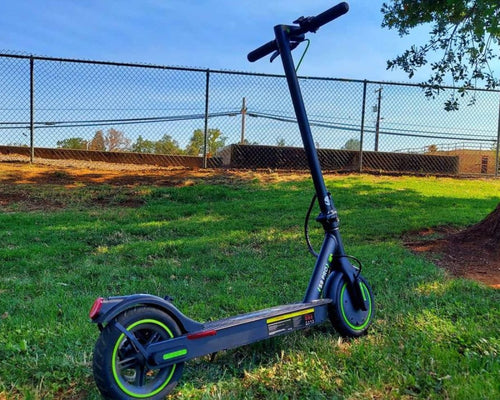





Leave a comment